News
I 10 migliori modi sorprendenti in cui la Blockchain può proteggere i tuoi dati in un mondo digitale nel 2024

9 maggio 2024 di Diana Amboli
36
Nel mondo iperconnesso di oggi, i nostri dati personali costituiscono una valuta invisibile. Vengono costantemente raccolti, analizzati e spesso violati, lasciandoci vulnerabili al furto di identità, alla frode e a un fastidioso senso di impotenza. Le violazioni della sicurezza dei dati dominano i titoli dei giornali, erodendo la fiducia nelle istituzioni ed evidenziando l’urgente necessità di un modo più sicuro per gestire il nostro digitale.
Nel mondo iperconnesso di oggi, i nostri dati personali costituiscono una valuta invisibile. Vengono costantemente raccolti, analizzati e spesso violati, lasciandoci vulnerabili al furto di identità, alla frode e a un fastidioso senso di impotenza. Le violazioni della sicurezza dei dati dominano i titoli dei giornali, erodendo la fiducia nelle istituzioni ed evidenziando l’urgente necessità di un modo più sicuro per gestire la nostra impronta digitale.
La tecnologia Blockchain, spesso associata a criptovalute come Bitcoin, offre un approccio rivoluzionario alla sicurezza dei dati. Ma come funziona e cosa lo distingue dal tradizionale metodi di sicurezza dei dati?
Rivoluzione decentralizzata: liberarsi dal silo
A differenza dei tradizionali sistemi di archiviazione dati in cui le informazioni risiedono su server centralizzati, la blockchain è decentralizzata. Immagina un gigantesco registro pubblico, continuamente aggiornato e distribuito su una vasta rete di computer. Ogni dato aggiunto a questo registro, chiamato blocco, è collegato in modo sicuro a quello precedente, creando una catena inalterabile. Questo decentramento offre diversi vantaggi:
-
Sicurezza avanzata: Modificare un singolo blocco sulla blockchain richiederebbe la modifica di tutti i blocchi successivi sull’intera rete, un’impresa quasi impossibile con milioni di computer che verificano costantemente i dati. Questo registro distribuito rende le manomissioni quasi impercettibili, riducendo significativamente il rischio di violazioni dei dati.
-
Trasparenza e fiducia: Ogni transazione sulla blockchain è visibile a tutti sulla rete. Questa trasparenza intrinseca favorisce la fiducia ed elimina la necessità che un’autorità centrale verifichi l’integrità dei dati.
-
Dare potere agli utenti: Dando agli utenti il controllo sui propri dati, la blockchain dà potere agli individui. Sei tu a decidere chi può accedere ai tuoi dati e a quali condizioni. Questo spostamento del controllo dalle aziende e dai governi ai singoli individui rappresenta un passo significativo verso un futuro digitale più sicuro.
I 10 migliori modi sorprendenti in cui la Blockchain può proteggere i tuoi dati in un mondo digitale nel 2024
Mentre ci avviciniamo al 2024, le violazioni dei dati e le preoccupazioni sulla privacy rimangono una minaccia costante. Ma non temere, perché la tecnologia blockchain sta emergendo come un potente guardiano delle nostre vite digitali. Analizziamo dieci incredibili modi in cui la blockchain protegge i tuoi dati in questo mondo sempre connesso:
-
Crittografia di livello Fort Knox: Al centro della blockchain c’è la crittografia, la stessa tecnologia che salvaguarda l’online banking. Ogni dato viene crittografato in codici complessi, rendendo quasi impossibile per gli hacker decifrarlo. Immagina che i tuoi dati siano rinchiusi in un Fort Knox digitale, accessibile solo al personale autorizzato.
-
Immutabilità: il registro immutabile: La blockchain opera su un registro distribuito, un registro condiviso replicato su una vasta rete di computer. Una volta registrati, i dati diventano parte permanente di questa catena, a prova di manomissione e immutabile. Consideralo come un libro di storia incorruttibile per i tuoi dati, garantendo che nessuna modifica non autorizzata possa cancellare o alterare le tue informazioni.
-
Decentralizzazione: potere al popolo: A differenza dei sistemi tradizionali con un’autorità centrale, la blockchain distribuisce il controllo. Non esiste un singolo punto di guasto, il che lo rende altamente resistente agli attacchi informatici. Immagina che i tuoi dati siano protetti da una rete globale, eliminando la vulnerabilità di un singolo punto di ingresso per gli hacker.
-
Trasparenza di cui ti puoi fidare: Molte blockchain sono autorizzate o pubbliche, consentendo agli utenti autorizzati di vedere tutte le transazioni. Ciò favorisce la fiducia e la responsabilità. È come avere una finestra trasparente su come vengono utilizzati i tuoi dati, garantendoti la massima tranquillità.
-
Percorsi di controllo migliorati: seguendo il percorso cartaceo digitale: Ogni interazione con i tuoi dati su una blockchain è meticolosamente documentata. Ciò crea una chiara traccia di controllo, che ti consente di monitorare il modo in cui i tuoi dati sono stati accessibili e utilizzati. Immagina un’impronta digitale per i tuoi dati, che fornisca una registrazione completa del loro viaggio.
-
Gestione sicura dell’identità: sei chi dichiari di essere: La blockchain può rivoluzionare la gestione delle identità. Immagina di archiviare i tuoi documenti di identità (passaporti, licenze) su un registro blockchain sicuro. Ciò eliminerebbe il rischio di documenti contraffatti e semplificherebbe i processi di verifica.
-
Controllo dell’accesso ai dati: sei tu il gatekeeper: Con la blockchain puoi controllare chi ha accesso ai tuoi dati. È possibile concedere autorizzazioni specifiche per scopi specifici. È come essere il custode del tuo caveau digitale, consentendo l’accesso solo a coloro di cui ti fidi.
-
Provenienza dei dati: sapere da dove provengono i tuoi dati: La Blockchain può tracciare l’origine dei tuoi dati. Ciò è particolarmente utile per cose come cartelle cliniche o transazioni finanziarie. Immagina di conoscere l’esatta fonte dei tuoi dati, assicurandone l’autenticità e prevenendone la manipolazione.
-
Condivisione sicura dei dati nell’era dell’IoT: L’Internet delle cose (IoT) è ricco di dispositivi connessi. La blockchain può proteggere la comunicazione tra questi dispositivi, proteggendoli da violazioni e manipolazioni dei dati. Immagina una rete sicura per i tuoi dispositivi domestici intelligenti, che protegga i tuoi dati da accessi non autorizzati.
-
Dare più potere agli individui nell’economia dei dati: La Blockchain può trasformare il modo in cui interagiamo con i nostri dati. Può consentire alle persone di vendere i propri dati direttamente alle parti interessate, eliminando gli intermediari e offrendo agli utenti un maggiore controllo sui propri dati e sulla privacy. Immagina di avere il potere di monetizzare i tuoi dati alle tue condizioni.
Questi sono solo dieci dei tanti modi in cui la blockchain proteggerà i nostri dati nel 2024. Man mano che la tecnologia matura, possiamo aspettarci applicazioni ancora più innovative che salvaguardano le nostre vite digitali e ci danno potere nell’economia dei dati.
Inoltre, leggi – Tutto sull’intrigante mondo del portafoglio Blockchain mentre raggiungiamo la fine dell’anno finanziario 2023
Alcune applicazioni reali della blockchain per la sicurezza dei dati nel 2024:
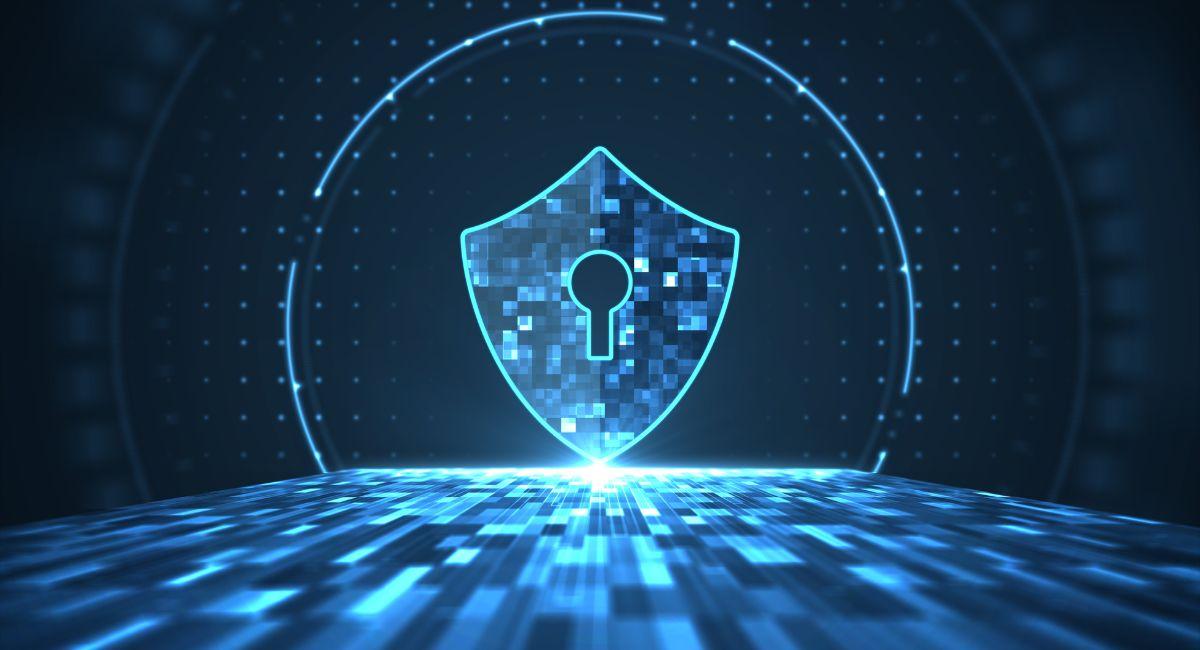
Assistenza sanitaria:
-
Gestione sicura delle cartelle cliniche: La blockchain può creare una registrazione a prova di manomissione della storia medica di un paziente. Ciò consente ai pazienti di controllare l’accesso e condividere i propri dati in modo sicuro con medici e ospedali, migliorando il coordinamento delle cure e riducendo il rischio di violazione dei dati.
-
Tracciamento dei farmaci e lotta alla contraffazione: La blockchain può tracciare il viaggio dei prodotti farmaceutici dal produttore alla farmacia, garantendone l’autenticità e prevenendo la vendita di farmaci contraffatti.
Gestione della catena di approvvigionamento:
-
Monitoraggio della provenienza: La blockchain può tracciare l’origine e il movimento delle merci lungo tutta la catena di approvvigionamento. Ciò aumenta la trasparenza, consentendo ai consumatori di verificare l’autenticità dei prodotti e alle aziende di identificare potenziali colli di bottiglia o fonti di contaminazione.
-
Contratti intelligenti per pagamenti sicuri: I contratti intelligenti, accordi autoeseguibili archiviati su una blockchain, possono automatizzare i pagamenti al rispetto di condizioni specifiche. Ciò elimina la necessità di intermediari e riduce il rischio di frode nelle transazioni.
Governo e gestione dell’identità:
-
Emissione sicura e verifica delle credenziali: Certificati di nascita, passaporti e altri documenti rilasciati dal governo possono essere archiviati in modo sicuro su una blockchain. Ciò riduce il rischio di falsificazione e semplifica i processi di verifica.
-
Sistemi di voto: I sistemi di voto basati su blockchain possono migliorare la sicurezza e la trasparenza delle elezioni. Creando un registro dei voti a prova di manomissione, è possibile ridurre al minimo il rischio di frode e manipolazione.
Altre applicazioni:
-
Condivisione dei dati nella ricerca: La blockchain può facilitare la condivisione sicura dei dati tra i ricercatori, proteggendo al tempo stesso la privacy dei pazienti. Ciò può accelerare la ricerca e l’innovazione medica.
-
Tutela della proprietà intellettuale: La blockchain può essere utilizzata per registrare e tenere traccia della proprietà della proprietà intellettuale, come diritti d’autore e brevetti. Ciò può scoraggiare il plagio e semplificare i pagamenti delle royalty.
Questi sono solo alcuni esempi e, poiché la tecnologia blockchain continua ad evolversi, possiamo aspettarci applicazioni ancora più innovative per la sicurezza dei dati in vari settori.
Sfide e considerazioni: una prospettiva equilibrata sulla blockchain per la sicurezza dei dati

Sebbene la blockchain offra un potente toolkit per la sicurezza dei dati, è importante riconoscere le sfide e le considerazioni in corso per la sua implementazione. Ecco una prospettiva equilibrata da tenere a mente:
-
Scalabilità: Le attuali implementazioni blockchain possono avere difficoltà a gestire enormi quantità di dati. L’elaborazione delle transazioni può essere lenta e dispendiosa in termini energetici, limitandone la scalabilità per applicazioni su larga scala.
-
Regolamento: Il panorama legale e normativo che circonda la blockchain è ancora in evoluzione. L’incertezza sulle normative può ostacolare l’adozione generalizzata e creare ostacoli alla conformità per le imprese.
-
Integrazione con sistemi esistenti: L’integrazione della tecnologia blockchain con l’infrastruttura IT esistente può essere complessa e richiedere risorse significative. Le aziende devono valutare attentamente l’analisi costi-benefici prima di immergersi.
-
Standardizzazione: La mancanza di protocolli standardizzati su diverse piattaforme blockchain può creare problemi di interoperabilità. Ciò può rendere difficile la comunicazione e la condivisione dei dati tra sistemi diversi.
-
Vulnerabilità della sicurezza: Sebbene la blockchain stessa sia sicura, possono esistere vulnerabilità a livello di applicazione o all’interno dei contratti intelligenti. Gli hacker possono sfruttare queste vulnerabilità per rubare dati o interrompere le operazioni.
-
Adozione e consapevolezza da parte degli utenti: Per un’adozione diffusa, l’educazione degli utenti e la consapevolezza riguardo alla tecnologia blockchain sono cruciali. Le persone devono comprenderne i vantaggi e i limiti per avere fiducia nell’archiviazione dei propri dati su una blockchain.
-
Preoccupazioni relative alla privacy: Sebbene le blockchain possano migliorare la trasparenza di determinati dati, alcune implementazioni potrebbero non essere ideali per informazioni personali altamente sensibili. Trovare un equilibrio tra trasparenza e privacy rimane una sfida.
-
Impatto ambientale: Il consumo energetico di alcuni protocolli blockchain, in particolare Proof of Work (PoW), può essere significativo. Per affrontare questo problema si stanno esplorando alternative sostenibili come la Proof of Stake (PoS).
Considerazioni per le aziende:
-
Caso d’uso chiaramente definito: Prima di implementare la blockchain, le aziende devono avere una chiara comprensione del problema specifico che stanno cercando di risolvere e di come la blockchain possa fornire un vantaggio unico rispetto alle soluzioni esistenti.
-
Analisi costi benefici: Il costo di implementazione e mantenimento di una soluzione blockchain deve essere valutato rispetto ai potenziali benefici in termini di maggiore sicurezza ed efficienza.
-
Impegno a lungo termine: Blockchain è una tecnologia in rapida evoluzione. Le aziende devono essere pronte ad adattarsi e investire nello sviluppo e nella manutenzione continui per mantenere le loro soluzioni blockchain sicure ed efficaci.
La blockchain offre un futuro promettente per la sicurezza dei dati, ma non è una soluzione valida per tutti. Riconoscendo le sfide e considerando attentamente la strategia di implementazione, le aziende e le organizzazioni possono sfruttare questa tecnologia per costruire un futuro digitale più sicuro e trasparente.
La strada da percorrere: un futuro costruito sulla fiducia
La tecnologia Blockchain rappresenta un’enorme promessa per la sicurezza dei dati in un mondo digitale. Man mano che la tecnologia matura e le sfide vengono affrontate, possiamo aspettarci di vedere uno spostamento verso un approccio alla gestione dei dati più sicuro e incentrato sull’utente. Il futuro non risiede nel controllo centralizzato, ma in un ecosistema decentralizzato in cui gli individui hanno un maggiore controllo sulla propria impronta digitale. Sfruttando la potenza della blockchain, possiamo costruire un mondo digitale più sicuro e affidabile per tutti.
News
Ether Drops Further After ETF Launch
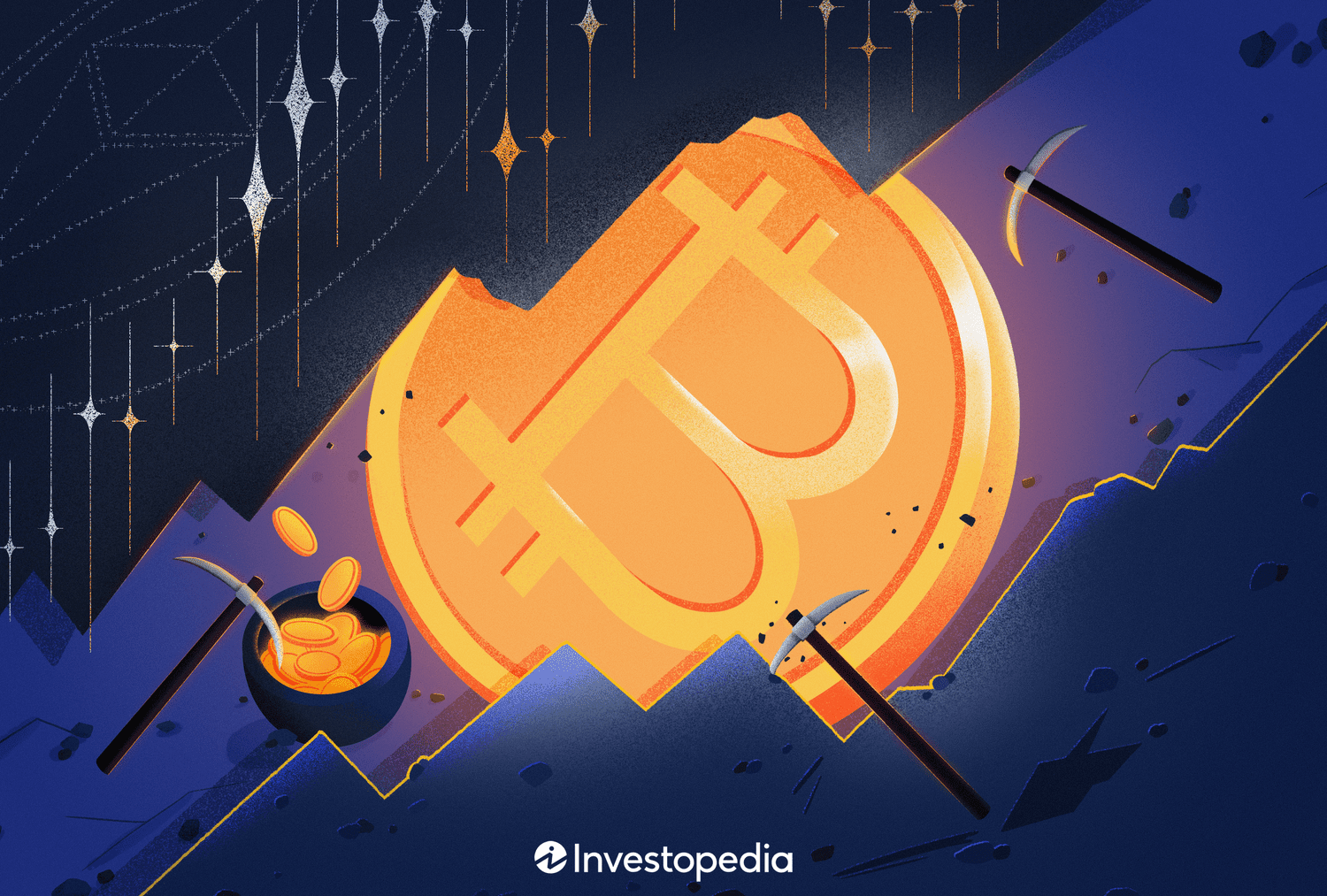
Key points
- Spot ether ETFs began trading in the U.S. today, with the funds initially having more than $10 billion in collective assets under management.
- Analysts expect the launch of spot ether ETFs to have a net negative impact on the underlying price of ether in the near term, due to expected outflows from the pre-existing Grayscale Ethereum Trust.
- Spot Bitcoin ETFs continue to see strong inflows, with BlackRock’s IBIT alone seeing more than $500 million in inflows on Monday.
- Franklin Templeton, a spot ETF issuer on bitcoin and ether, has invested in a project that intends to bring Ethereum technology to Bitcoin.
Nine-point ether exchange-traded funds (ETFs)) started trading on the stock market on Tuesday, but all the optimism ahead of their approval did not translate into gains for the cryptocurrency markets.
Ether (ETH), the native cryptocurrency of the Ethereum blockchain, dropped less than 1% around the $3,400 level as of 1:30 PM ET, while Bitcoin (BTC) fell more than 2% to around $66,000.
Ether ETFs’ Debut Isn’t as Flashy as Bitcoin ETFs’
Spot ether ETFs began trading at just over $10 billion assets under management (AUM)), according to Bloomberg Intelligence analyst James Seyffart, most of that money is in the current Grayscale Ethereum Trust (ETHE) which has now been converted into an ETF.
“In the long term, Grayscale will simultaneously have the highest and lowest fees in the market. The asset manager’s decision to keep its ETHE fee at 2.5% could lead to outflows from the fund,” Kaiko Research said in a note on Monday.
Outflows from ETHE, if they occur, would be similar to those faced by Grayscale’s Bitcoin Trust (GBTC) after spot bitcoin ETFs began trading in January of this year, most likely due to high fees for the two original funds. Grayscale’s existing fund charges 2.5% fees, while a new “mini” ether ETF will charge 0.15% and commissions for other ETFs are set at 0.25% or less.
Such outflows could impact the price of ether and market sentiment.
“There could be a pullback shortly after the launch of Ethereum spot ETFs, i.e. outflows from Grayscale Ether Trust could dampen market sentiment in the short term,” Jupiter Zheng, a partner at Hashkey Capital’s liquid fund, told The Block.
But Grayscale remains optimistic.
“Compared to the splashy debut of spot bitcoin ETPs in January, the launch of ethereum ETPs has been relatively muted,” said Zach Pandl, Grayscale’s head of research, adding that investors may be “undervaluing” ether ETFs that are “coming to the U.S. market in tandem with a shift in U.S. cryptocurrency policy and the adoption of tokenization by major financial institutions.”
Bitcoin ETF Inflows Continue to Rise
As for bitcoin, there is clearly no lack of demand for spot ETFs, such as BlackRock’s iShares Bitcoin Trust (IBITS) recorded its sixth-largest day of inflows in its short history on Monday, at $526.7 million, according to data from Farside Investors. Daily inflows for the overall spot bitcoin ETF market also hit their highest level since June 5.
In particular, asset manager Franklin Templeton, which has issued both bitcoin and ether ETFs, appears to have decided to cover its back when it comes to Ethereum by investing in Bitlayer, a way to implement Ethereum technology on a second-layer Bitcoin network, according to CoinDesk.
News
Spot Ether ETFs Start Trading Today: Here’s What You Need to Know

Key points
- Spot ether ETFs will begin trading on U.S. exchanges on Tuesday. Nine ETFs will trade on Cboe BZX, Nasdaq and NYSE Arca.
- Ether ETFs offer investors exposure to the price of their underlying assets.
- Commissions on these new ETFs generally range from 0.15% to 0.25%.
- These ETFs do not provide exposure to Ethereum staking.
The U.S. Securities and Exchange Commission (SEC) has officially approved nine ether spots (ETH)exchange-traded funds (ETFs) for trading on U.S. exchanges. Trading for these new cryptocurrency investment vehicles begins today. Here’s everything you need to know.
What new ether ETFs are starting to trade today?
Spot ether ETFs starting trading today can be found at Quotation, NYSE Arkand Cboe BZX. Here’s a breakdown of each ETF you can find on these three exchanges, along with the fund tickers:
Cboe BZX will list the Invesco Galaxy Ethereum ETF (QETH), the 21Shares Core Ethereum ETF (CETH), the Fidelity Ethereum Fund (FETH), the Franklin Ethereum ETF (EZET) and the VanEck Ethereum ETF (ETHV).
Nasdaq will have the iShares Ethereum Trust ETF (ETHA) created by BlackRock, which also operates the largest spot bitcoin ETF under the ticker IBIT.
NYSE Arca will list the Bitwise Ethereum ETF (ETHW) and the Grayscale Ethereum Trust (ETHE). The Grayscale Ethereum Mini Trust (ETH), which will begin trading on the same exchange.
How does an ether ETF work?
Spot ether ETFs are intended to offer exposure to the price of ether held by the funds. Ether is the underlying cryptocurrency of the Ethereal network, the second largest crypto network by market capitalization.
ETF buyers are buying shares of funds that hold ether on behalf of their shareholders. Different spot ether ETFs use different data sources when it comes to setting the price of ether. Grayscale Ethereum Trust, for example, uses the CoinDesk Ether Price Index.
None of the ETFs launching today include pointed etherwhich represents a potential opportunity cost associated with choosing an ETF over other options such as self-custody or a traditional cryptocurrency exchange.
Ether staking currently has an annual return of 3.32%, according to the Compass Staking Yield Reference Index Ethereum. However, it is possible that the SEC will eventually approve Ether staking held by ETFs.
How can I trade Ether ETFs?
ETFs can simplify the trading process for investors. In the case of cryptocurrencies, instead of taking full custody of the ether and taking care of your own private keysSpot ether ETFs allow investors to purchase the cryptocurrency underlying the Ethereum network through traditional brokerage accounts.
Today, not all brokers may offer their clients spot ETFs on cryptocurrencies.
What are the fees for ether ETFs?
The fees associated with each individual spot ether ETF were previously revealed In the S-1 OR S-3 (depending on the specific ETF) deposit associated with the offerings. These fees are 0.25% or less for all but one.
The Grayscale Ethereum Trust, which converts to an ETF, has a fee of 2.5%. The Grayscale Mini Ethereum Trust has the lowest fee at 0.15%. These fees are charged on an annual basis for the provider’s management of the fund and are in line with what was previously seen with spot bitcoin ETFs.
Brokers may also charge their own fees for cryptocurrency trading.
News
Kamala Harris Odds Surge Amid $81M Fundraise. What Does It Mean for Bitcoin and Cryptocurrencies?

Market odds and memecoins related to US Vice President Kamala Harris have soared as the latest round of donations tied to the Democratic campaign raised $81 million in 24 hours, bolstering sentiment among some traders.
The odds of Harris being declared the Democratic nominee have risen further to 90% on cryptocurrency betting app Polymarket, up from 80% on Monday and setting a new high.
Previously, in early July, bettors were only betting on 8%, but that changed on Saturday when incumbent President Joe Biden announced he would no longer run in the November election. Biden then approved Harris as a candidate.
Polymarket traders placed $28.6 million in bets in favor of Harris, the data showsThe second favorite is Michelle Obama.
Somewhere else, Memecoin KAMA based on Solanaa political meme token modeled after Harris, has jumped 62% to set a new all-time high of 2 cents at a market cap of $27 million. The token is up a whopping 4,000% from its June 18 low of $0.00061, buoyed primarily by the possibility of Harris becoming president.
As such, Harris has yet to publicly comment on cryptocurrencies or her strategy for the growing market. On the other hand, Republican candidate Donald Trump has expressed support for the cryptocurrency market and is expected to appear at the Bitcoin 2024 conference on Saturday.
However, some expect Harris or the Democratic Party to mention the sector in the coming weeks, which could impact price action.
“While he has not yet received the official nomination, there is consensus that last night’s development is in line with current Democratic strategy,” cryptocurrency trading firm Wintermute said in a Monday note emailed to CoinDesk. “Keep an eye on Democrats’ comments on this issue in the coming days.
“The prevailing assumption is that Harris will win the nomination and any deviation from this expectation could cause market volatility,” the firm added.
News
Top 30x Cryptocurrency and Coin Presales Today: Artemis Coin at #1, Others Are: BlockDAG, 99Bitcoin, eTukTuk, and WienerAI
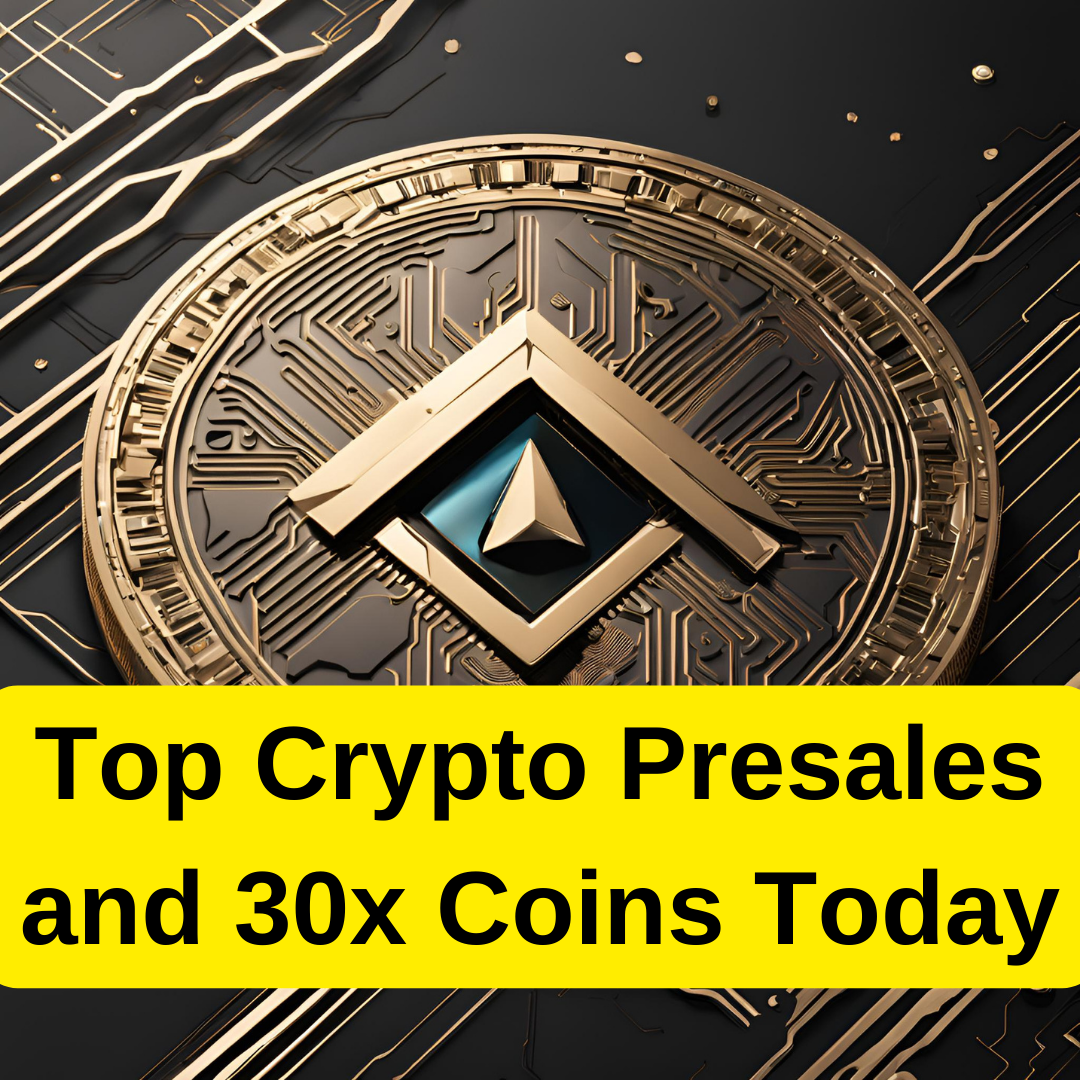
The cryptocurrency market has seen a lot of growth and imagination lately, with new ventures popping up regularly. A critical pattern in this space is the rise of crypto pre-sales, which give backers the opportunity to get involved with promising projects early on. Artemis is a standout option for crypto investors looking to expand their portfolios amid the many pre-sales currently underway.
Cryptocurrency presales, commonly referred to as initial coin offerings (ICOs), allow blockchain ventures to raise capital by offering their local tokens to early backers before they become available on open exchanges. Investors can take advantage of these presales by purchasing tokens at a lower price. If the project is successful and the token’s value increases, investors stand to receive significant returns.
>>> Explore the best cryptocurrency pre-sales to buy now <<
The Ultimate List of the Top 5 Cryptocurrency Pre-Sales to Invest In
- Artemis: The aim of Artemis (ARTMS) will become the cryptocurrency equivalent of eBay or Amazon. The upcoming Phase 4 will see the launch of the Artemis Framework, which will serve as a stage for digital money exchanges where buyers, sellers, specialized organizations and those seeking administration can participate in coherent exchanges.
- DAG Block: uses Directed Acyclic Graph technology to increase blockchain scalability.
- 99bitcoin: operates as a crypto learning platform
- WienerAI uses AI-powered trading bots for precise market analysis.
- eTukTuk focuses on environmentally sustainable transportation options, such as electric vehicle charging infrastructure.
We have determined that Artemis is the best new cryptocurrency presale for investment after conducting extensive research. It presents itself as the unrivaled cryptocurrency presale choice currently open.
>> Visit the best cryptocurrency pre-sale to invest in now <<
Top 5 Crypto Pre-Sales and Best Cryptocurrencies for Investment Today
Artemis (ARTMS) is attempting to establish itself as the cryptocurrency version of eBay or Amazon. The Artemis Crypto System, which will act as a platform for cryptocurrency transactions, will be launched in Phase 4. Buyers, sellers, service providers, and requesters will all benefit from seamless trading with this system. Customers will be able to purchase things, such as mobile phones using digital money, as well as sell products such as involved bicycles and get paid in cryptocurrency. Additionally, crypto money can be used to pay for administrations such as clinical consultations, legitimate care, and freelance work. Artemis Coin will act as the main currency of the ecosystem, with Bitcoin and other well-known cryptocurrencies from various blockchain networks backing it.
Artemis Coin has increased in price from 0.00055 to 0.00101 from 0.00094. Artemis may be attractive to individuals looking to recoup losses in Bitcoin, as predicted by cryptocurrency analysts. At this point, it seems to present an interesting presale opportunity.
>>> Visit the best cryptocurrency pre-sale to invest in now <<
The world of digital currency pre-sales is an exciting and exciting opportunity that could open the door to game-changing blockchain projects. Projects in this article, like Artemis Coin, offer the opportunity to shape the future of various industries and the potential for significant returns as the industry develops.
However, it is imperative to approach these investments with caution, thorough research, portfolio diversification, and awareness of the risks. You can explore the digital currency pre-sale scene with greater certainty and increase your chances of identifying and profiting from the most promising venture opportunities by following the advice and methods in this article.
>>> Join the best cryptocurrency pre-sale to invest in now <<
-
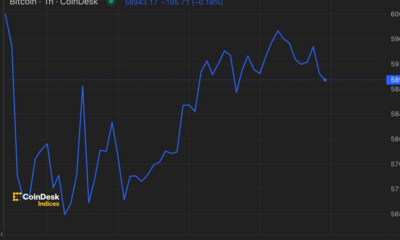
 News12 months ago
News12 months agoBitcoin (BTC) price recovery faces test on non-farm payrolls
-

 Bitcoin9 months ago
Bitcoin9 months ago1 Top Cryptocurrency That Could Surge Over 4,300%, According to This Wall Street Firm
-

 News11 months ago
News11 months ago11 Best Shitcoins to Buy in 2024: The Full List
-
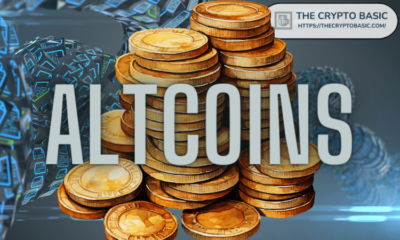
 Altcoins9 months ago
Altcoins9 months agoOn-chain data confirms whales are preparing for altcoin surge with increased buy orders
-

 News12 months ago
News12 months agoNew ByBit Listings for 2024: 10 Potential Listings
-

 Bitcoin9 months ago
Bitcoin9 months agoThe US government may start accumulating Bitcoin, but how and why?
-

 News11 months ago
News11 months ago11 Best Crypto TikTok Accounts & Influencers in 2024
-
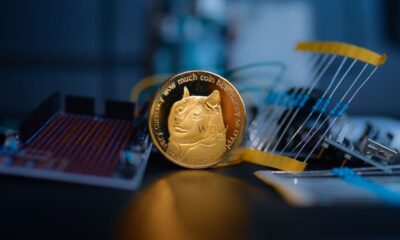
 Ethereum12 months ago
Ethereum12 months agoTop Meme Coins by Market Capitalization in 2024
-

 News11 months ago
News11 months ago19 Best Crypto Games to Play in 2024
-

 News10 months ago
News10 months ago1.08 Trillion SHIBs Dumped on Major Crypto Exchange, What’s Going On?
-

 Altcoins12 months ago
Altcoins12 months agoAltcoin Recommended by Crypto Expert for Today’s Portfolio
-
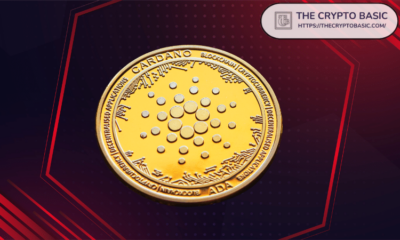
 Ethereum9 months ago
Ethereum9 months agoCardano Founder Hints at ADA ETF Amid Ethereum Launch Excitement





